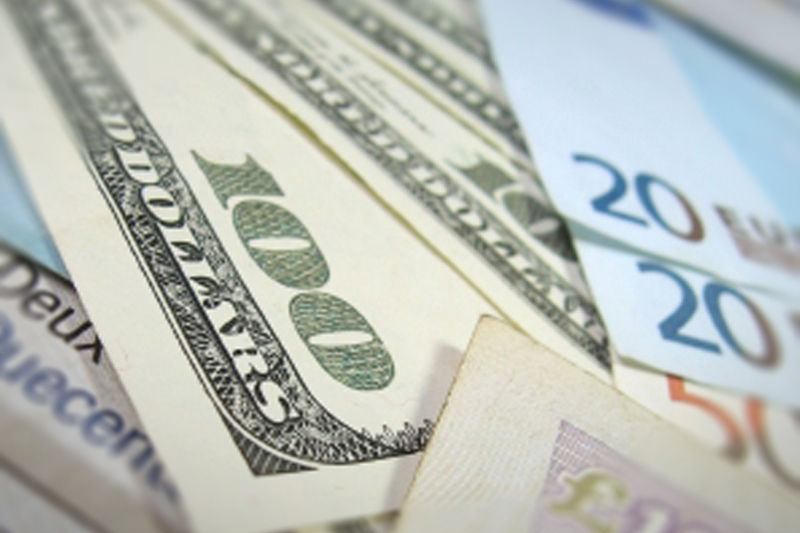Investing.com -- EUR/USD fell sharply on Tuesday to drop to fresh one month lows, as inflation growth in the euro zone fell for the second consecutive month providing signals that the European Central Bank could employ additional stimulus measures in the coming weeks to stave off risks of deflation.
The currency pair traded in a broad range between 1.0711 and 1.0839 before settling at 1.0753, down 0.66% on the session. The euro has closed lower against the dollar in four straight sessions and six of the last seven. The euro is down approximately 1.75% since December 3 when the European Central Bank rattled global foreign exchange markets by only approving limited easing measures to it comprehensive asset purchasing program at a closely-watched meeting.
EUR/USD likely gained support at 1.0565, the low from November 25 and was met with resistance at 1.1059, the high from Dec. 15.
Last month, inflation in the euro area increased by 0.2% on an annual basis, in line with analysts' forecasts of a 0.2% gain. In November, annual inflation also increased moderately by 0.2%. In terms of core inflation, the annual gains provided less optimistic results. Core inflation, which strips out food and energy prices, rose by 0.8%, slightly lower from November increases of 0.9%. The reading also came in lower than analysts' forecasts for a 1.0% annual gain.
The soft reading could prompt the ECB to cut interest rates when it convenes at a highly-anticipated meeting on Jan. 21. The euro has slumped approximately 10% against the dollar since the ECB launched a comprehensive €1.1 trillion quantitative easing program in early-2015. The asset purchasing program has weakened the euro by increasing the ECB's supply base, propping up other major currencies such as the dollar, pound and Japanese yen. Companies which sell bonds to the central bank, can also use the money to invest overseas, driving down the price of the euro versus the dollar.
The dollar also received further support from concerns in China, as currency traders continued to react to Monday's sell-off when the Shanghai Composite index crashed 7% and the yuan suffered one of its worst one-day sessions in several months. On Tuesday morning, the People's Bank of China (PBOC) injected the most cash into the nation's open-market operations since September, one day after weak manufacturing data for December sent Chinese equities crashing, sparking fresh concerns of a further slowdown in the world's second-largest economy.
In its latest effort to bolster its flagging economy, the PBOC offered 130 billion yuan ($19.9 billion) of seven-day reverse repo's on Tuesday at an interest rate of 2.25%. The stimulus measures are aimed at lowering borrowing costs in order to jumpstart activity in an economy that is projected to report its slowest annual growth rate in more than two decades.
The U.S. Dollar Index, which measures the strength of the greenback versus a basket of six other major currencies, rose by more than 0.65% to an intraday high of 99.53, before settling at 99.47. The index has closed higher in six consecutive sessions.
